Pink Mold: Complete Guide to Identification, Health Risks, and Professional Removal
Everything you need to know about pink mold, its health risks, and how to properly remove it from your home
Pink mold isn’t actually mold – it’s bacterial growth that appears in damp areas like bathrooms and kitchens. While less toxic than black mold, it can still cause serious health issues, especially for vulnerable individuals. This guide covers identification, health risks, and professional removal solutions.
🚨 Worried About Pink Mold? Get a Free Professional Assessment!
Pink mold, though not a true mold, can be a hidden hazard in your home. It’s often found in damp areas like bathrooms and kitchens, posing health risks similar to other molds. Don’t let it go unchecked! Contact Mold Busters for a free virtual mold inspection. Our certified experts are ready to provide you with a comprehensive assessment and a plan to tackle any mold issue, ensuring your home is safe and healthy. Act now to protect your space!
What is Pink Mold and What Causes It?
Pink mold is actually bacterial growth, primarily caused by Serratia marcescens, not true mold. It thrives in warm, moist environments with poor ventilation, commonly appearing in bathrooms and kitchens where humidity and organic matter provide ideal conditions.
Pink mold is not actually a “mold,” but a bacterial growth commonly found in damp areas of the home like the bathroom and kitchen. The primary cause is the bacteria Serratia marcescens, which thrives in warm, moist environments with poor ventilation.
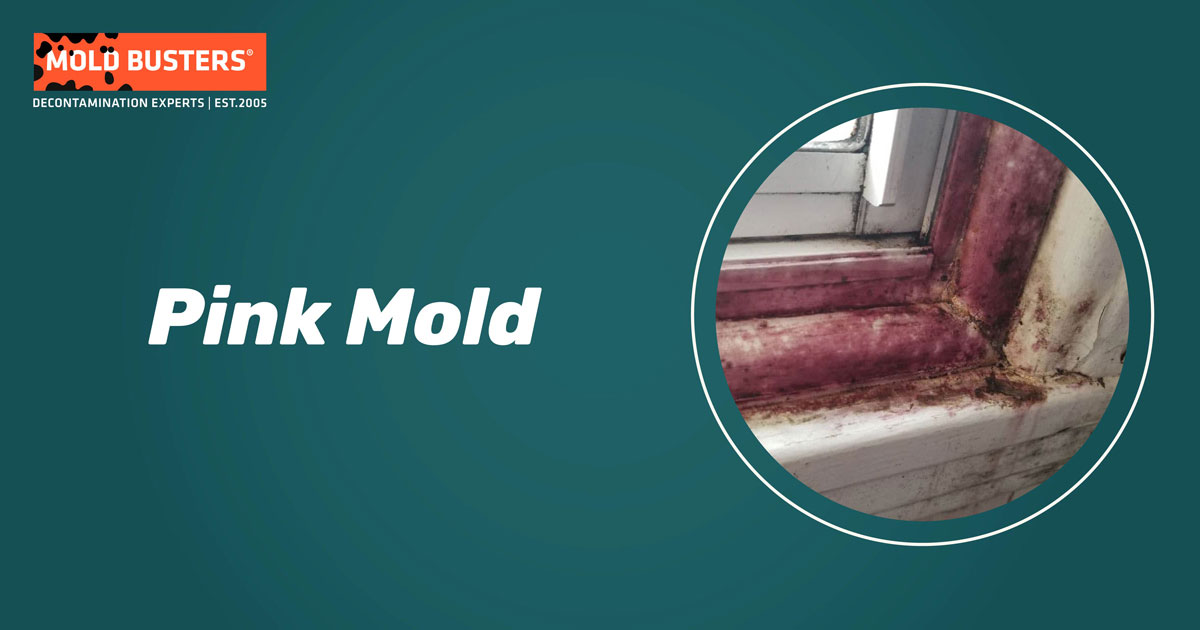
Pink mold bacterial growth patterns commonly found in homes
Primary Causes of Pink Mold Growth
🌡️ Environmental Conditions
- Excess moisture: Humidity levels above 60%
- Poor ventilation: Stagnant air in bathrooms/kitchens
- Warm temperatures: Ideal growth at 68-86°F (20-30°C)
🧼 Nutrient Sources
- Soap residue: Provides essential nutrients
- Organic matter: Skin cells and personal care products
- Standing water: Creates sustained moisture
Common Types of Pink Bacterial Growth
The two most common bacterial types responsible for pink growth are Aureobasidium pullulans and Serratia marcescens. These bacterial colonies can grow on many surfaces and locations throughout your home.
Other fungi that can appear pink include:
- Fuligo septica (pink slime mold)
- Epicoccum nigrum
- Aspergillus versicolor
- Penicillium
- Acremonium strictum
- Phoma

Common locations where pink mold grows in residential homes
Signs and Symptoms of Pink Mold Contamination
👁️ Visual Signs
- Pink, salmon, or reddish discoloration
- Slimy or fuzzy texture
- Staining that persists after cleaning
- Growth in corners and moisture-prone areas
🌬️ Environmental Indicators
- Persistent musty or mildew-like odors
- Increased humidity levels
- Visible moisture or condensation
- Poor air quality or stuffy atmosphere
Important: Just because it’s not technically a mold doesn’t mean you can simply wipe it away. Pink bacterial growth acts very similar to a mold colony and will return if not remediated properly. It also poses many health risks that mimic various types of molds.
What Does Pink Mold Look Like?

Pink mold appearance variations showing different textures and colors
Pink mold can appear in several forms:
- Light pink and fuzzy: Often appears dry with a cotton-like texture
- Deep pink and slimy: Appears wet and viscous to the naked eye
- Salmon-colored patches: May appear orange-pink under certain lighting
- Film-like coating: Creates a thin bacterial biofilm on surfaces
Smell: Pink mold typically has a musty or mildew-like smell, similar to the scent of damp clothes or a wet basement. This smell is caused by the microbial volatile organic compounds (MVOCs) that bacteria produce as they multiply.
Health Risks of Pink Mold Exposure
Pink mold exposure can cause respiratory issues, allergic reactions, skin irritation, and infections. High-risk individuals include infants, elderly, immunocompromised people, and those with existing respiratory conditions. Symptoms range from minor irritations to serious infections requiring medical attention.
⚠️ Health Warning
While pink mold may appear less threatening than black mold, it can still pose significant health risks, particularly for people with compromised immune systems, young children, and elderly individuals.
Can Pink Mold Make You Sick?
Exposure to pink mold can indeed make you sick, especially if you have a weak immune system or existing allergies. The bacteria Serratia marcescens can cause various health problems ranging from minor irritations to serious infections.
Respiratory Symptoms
- Coughing and wheezing
- Respiratory tract infections
- Pneumonia and bronchitis in severe cases
- Difficulty breathing
🤧 Allergic Reactions
- Sneezing and runny nose
- Itchy, watery eyes
- Sinus troubles and congestion
- Skin irritation and rashes
🦠 Infections & Other Issues
- Bladder and urinary tract infections
- Gastrointestinal issues (nausea, vomiting)
- Eye infections (especially contact lens wearers)
- Wound infections in open cuts
Who is Most at Risk?
High-Risk Individuals:
- Infants and young children with developing immune systems
- Elderly individuals with weakened immunity
- Immunocompromised people (cancer patients, HIV/AIDS)
- Respiratory condition sufferers (asthma, COPD)
- Contact lens wearers (risk of eye infections)
- Anyone with open wounds or surgical sites
Is Pink Mold in Shower Dangerous?
Yes, pink mold in showers poses particular dangers due to the intimate nature of bathroom use. Daily exposure through inhalation of airborne bacteria and direct skin contact can lead to persistent health issues. The warm, humid shower environment allows bacteria to multiply rapidly, increasing exposure levels.
If you or family members experience recurring respiratory symptoms, skin irritation, or eye problems after showering, professional mold remediation may be necessary.
What Happens if You Eat Pink Mold?
Accidentally consuming pink mold can lead to food poisoning-like symptoms, including nausea, vomiting, diarrhea, and stomach cramps. In some cases, it can also cause allergic reactions or respiratory problems. If you suspect consumption of contaminated food, seek medical attention promptly.
Where Pink Mold Typically Grows in Your Home
Pink mold commonly grows in bathrooms (shower corners, toilet areas), kitchens (around sinks, dishwashers), washing machines, and basements. It thrives anywhere with high humidity, poor ventilation, and organic matter from soap residue or food particles.
Pink mold thrives in specific environments throughout your home. Understanding common growth locations helps with early detection and prevention strategies.
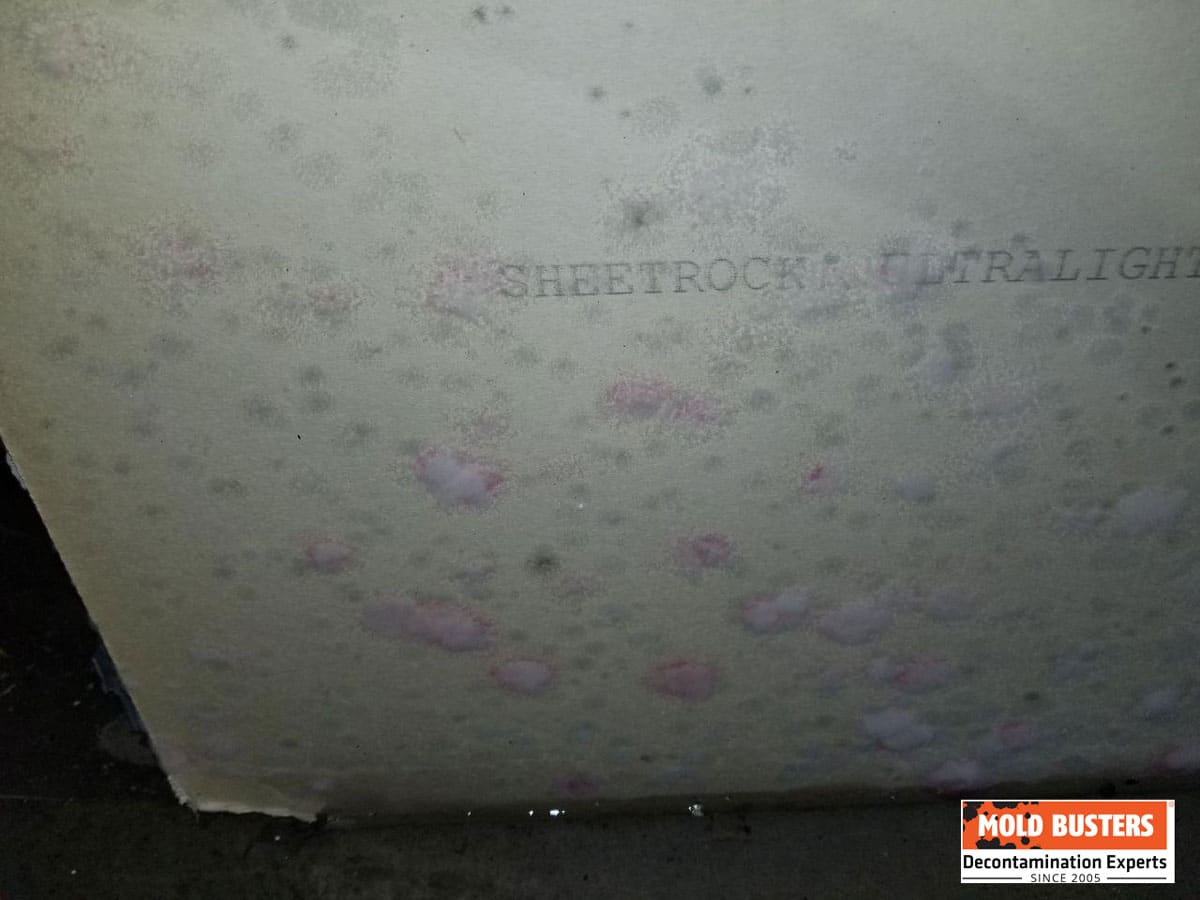
Moisture buildup on sheetrock creating ideal pink mold conditions
📍 Pink Mold Growth Locations & Risk Assessment
| Location | Characteristics | Risk Level | Recommended Action |
|---|---|---|---|
| Pink Mold in Bathrooms | Slimy texture in corners, tiles, shower curtains | High | Professional cleaning and improved ventilation |
| Pink Mold in Washing Machines | Film on rubber seals, detergent dispensers | High | Deep cleaning cycle and door maintenance |
| Pink Mold on Food | Fuzzy growth on bread, produce, leftovers | Very High | Immediate disposal and refrigerator cleaning |
| Pink Mold on Carpet | Spots or patches, musty odors | Medium | Professional carpet remediation |
| Pink Mold on Drywall | Discoloration, structural damage potential | High | Professional assessment and replacement if severe |
Pink Mold in Bathrooms
🚿 Common Bathroom Locations
- Shower corners and tile grout
- Shower curtains and liners
- Around faucets and fixtures
- Toilet bowl waterlines and behind toilets
- Bathroom window sills with condensation
🛡️ Prevention Strategies
- Use exhaust fans during and after showers
- Wipe down wet surfaces immediately
- Replace shower curtains regularly
- Address plumbing leaks promptly
- Clean with antimicrobial solutions weekly
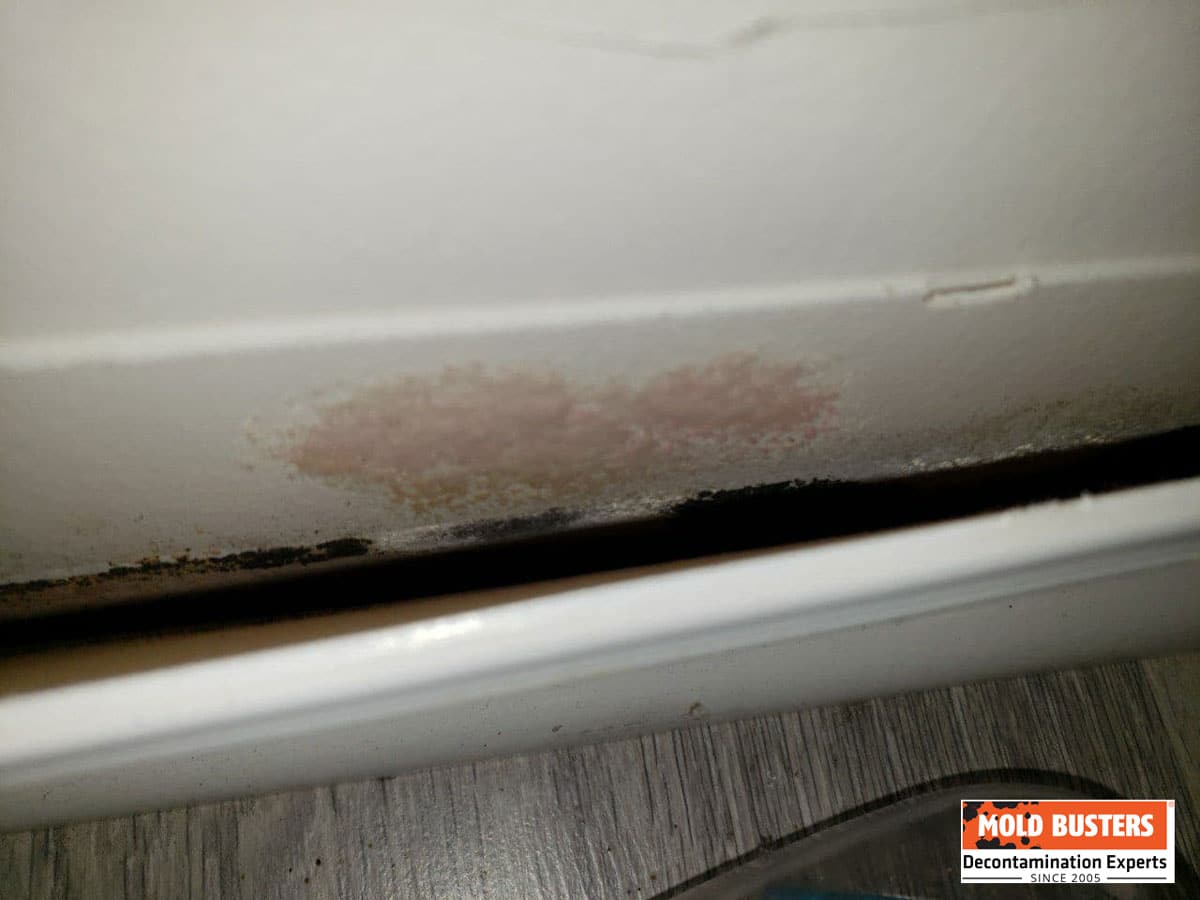
Professional pink mold removal process in bathroom environments
Pink Mold in Toilet Areas
Toilets create unique environments for bacterial growth due to constant moisture and organic waste materials. Pink bacteria commonly appear:
- Under toilet seats and hinges
- Around the base where water may leak
- Inside toilet bowls at the waterline
- Behind toilets where humidity accumulates
Pink Mold in Kitchens
Kitchen environments provide multiple growth opportunities through food particles, moisture, and warm temperatures:
🍽️ Kitchen Growth Areas
- Around sink areas and faucet bases
- Dishwasher door seals and filter areas
- Pet food and water bowls
- Behind appliances where moisture accumulates
- Refrigerator drip pans and water dispensers
🏠 Other Common Areas
- Basements with high humidity
- Laundry rooms near washers/dryers
- HVAC systems and ductwork
- Around water heaters and utility connections
- Storage areas with poor ventilation
Pink Mold in Basements
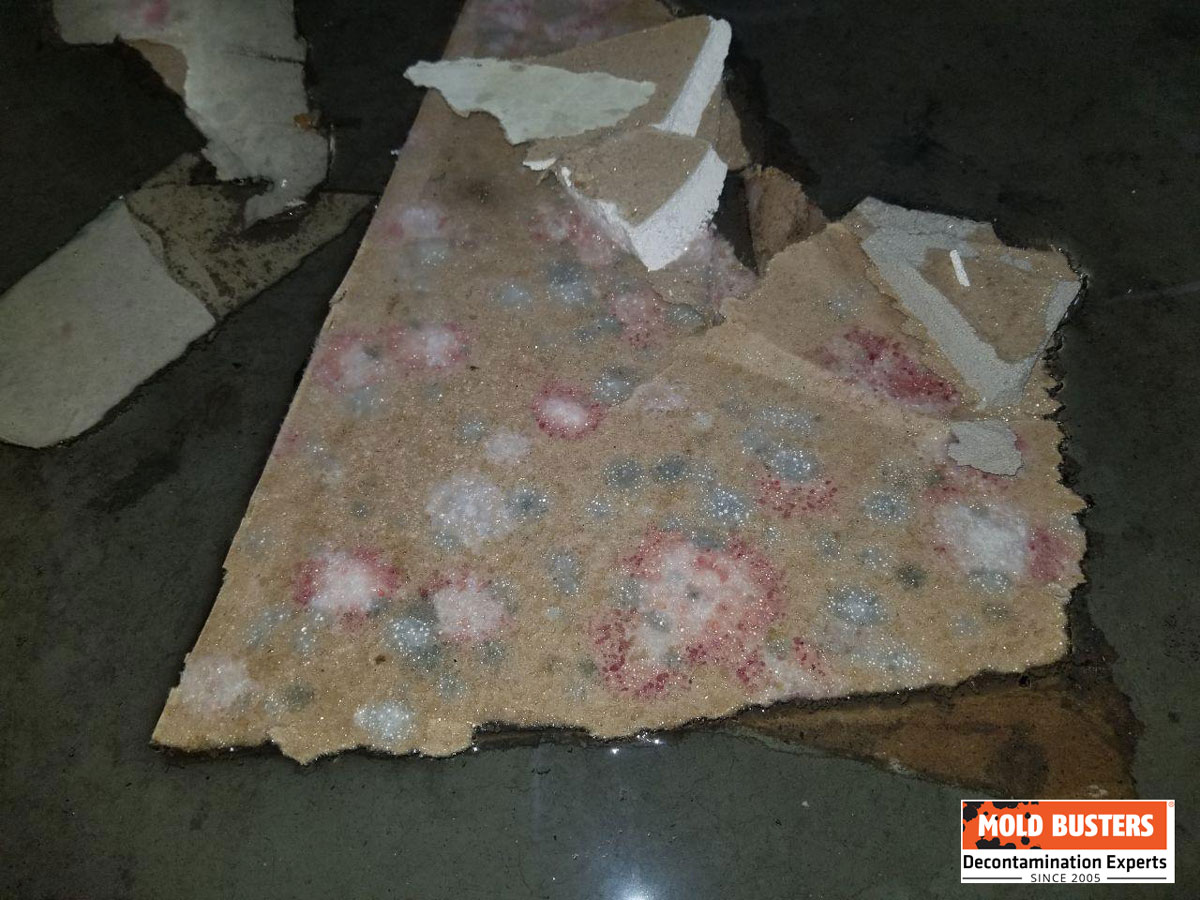
Pink mold discovered in basement environment with high humidity
Basement areas naturally maintain higher humidity levels due to concrete surfaces and lower temperatures. Key growth areas include:
- Sump pump areas and drainage systems
- Around water heaters and utility connections
- Concrete walls with moisture seepage
- Storage areas with poor ventilation
- Laundry rooms with washer/dryer moisture
Pink Mold on Various Surfaces
🏠 Fabric & Soft Materials
- Carpet: Requires professional remediation
- Clothing: Wash in hot water immediately
- Upholstery: Professional cleaning recommended
🔨 Hard Materials
- Drywall: May require replacement if severe
- Wood: Professional assessment needed
- Tile & Grout: Deep cleaning with antimicrobials
Pink Mold in Humidifiers and Appliances
🔧 Appliance Maintenance Requirements
- Humidifiers: Daily cleaning and distilled water use
- Air conditioners: Check drain pans and filters regularly
- Washing machines: Focus on door seals and detergent dispensers
- Dishwashers: Clean filters and door seals monthly
How to Get Rid of Pink Mold Effectively
Effective pink mold removal requires professional intervention for areas over 3 square feet or recurring problems. Small surface areas may respond to proper cleaning with bleach solutions, but established bacterial colonies often need specialized antimicrobial treatments and moisture source elimination.

Professional pink mold removal techniques and methods
Effective pink mold removal requires understanding the difference between surface cleaning and comprehensive remediation. While minor surface growth may respond to proper cleaning techniques, established bacterial colonies often require professional intervention.
Professional vs. DIY Pink Mold Removal
🏢 When to Call Professionals
- Growth covers more than 3 square feet
- Recurring problems despite cleaning
- HVAC system contamination suspected
- Family members experiencing health symptoms
- Growth on porous materials (drywall, wood)
- Vulnerable family members present
🏠 DIY Appropriate For
- Small surface areas (less than 1 square foot)
- Recent growth with no underlying issues
- Hard, non-porous surfaces only
- No family health concerns present
- Proper safety equipment available
- Adequate ventilation possible
Step-by-Step Pink Mold Removal Process
⚠️ For Minor Surface Contamination Only
Safety First: This process is only for small, surface-level contamination. Larger areas require professional remediation.
🛡️ Safety Preparation
- Wear rubber gloves, N95 mask, eye protection
- Ensure adequate airflow with fans and windows
- Isolate area from rest of home if possible
- Have cleanup materials ready
🧽 Cleaning Process
- Mix 1 part bleach with 4 parts water
- Spray solution and let sit for 15 minutes
- Scrub with soft bristle brush
- Rinse thoroughly with clean water
- Dry completely to prevent regrowth
- Monitor area daily for one week
⚠️ Safety Warning: Never mix bleach with other cleaning products as this creates toxic gases. Always work in well-ventilated areas and follow manufacturer instructions.
Does Vinegar Kill Pink Mold Effectively?
While vinegar has antimicrobial properties, it often provides only temporary surface treatment. Vinegar may reduce visible growth but rarely eliminates the bacterial colony completely. For lasting results, professional remediation targeting the moisture source and complete bacterial removal is typically necessary.
Professional Remediation Advantages
Professional mold removal services provide comprehensive solutions addressing both bacterial contamination and underlying causes:
🔬 Advanced Technology
- Industrial-grade cleaners and antimicrobials
- Thermal imaging and moisture meters
- HEPA filtration systems
- Professional-grade protective equipment
✅ Comprehensive Solutions
- Health-safe protocols and containment
- Moisture source identification
- Warranty protection against regrowth
- Property protection and restoration
How to Prevent Pink Mold from Growing
Pink mold prevention focuses on moisture control, maintaining humidity below 60%, improving ventilation, and regular cleaning with antimicrobial solutions. Key strategies include fixing leaks immediately, using exhaust fans, and implementing consistent maintenance routines for high-risk areas.
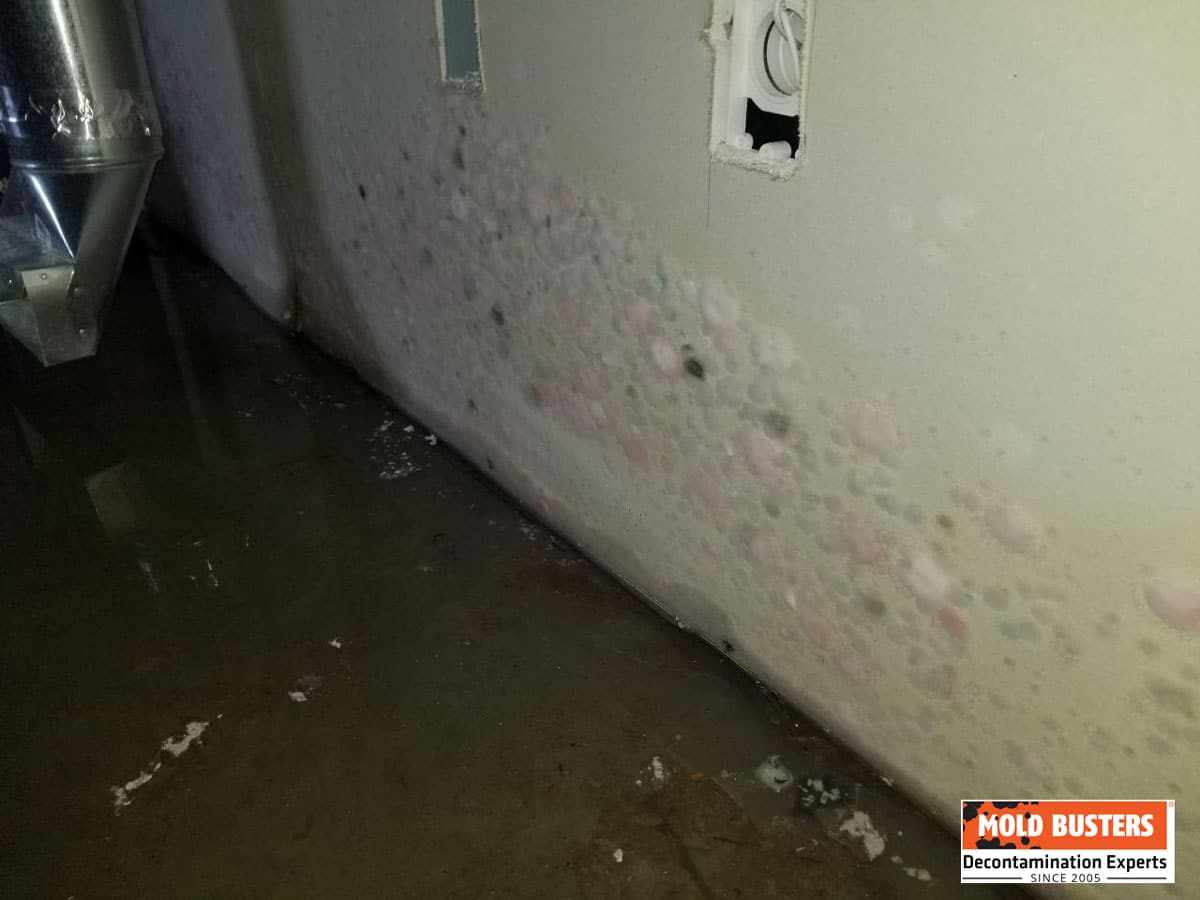
Understanding pink mold spores and effective prevention strategies
Preventing pink mold requires addressing the root environmental conditions that allow bacterial growth to occur.
Essential Prevention Strategies
💧 Moisture Control
- Maintain indoor humidity below 60% using dehumidifiers
- Fix leaks immediately upon detection
- Ensure proper ventilation in bathrooms and kitchens
- Use exhaust fans during moisture-generating activities
🧹 Regular Maintenance
- Clean bathrooms weekly with antimicrobial solutions
- Wipe down shower walls after each use
- Replace shower curtains and liners regularly
- Clean appliance seals and filters monthly
🏠 Environmental Improvements
- Install or upgrade bathroom exhaust fans
- Improve natural ventilation with operable windows
- Address basement moisture with proper drainage
- Use mold-resistant materials in high-humidity areas
Canadian Climate Considerations
🍁 Canadian homes face unique challenges:
- Winter condensation: Indoor heating creates humidity differentials
- Spring flooding: Basement moisture from snowmelt
- Summer humidity: Air conditioning condensation issues
- Building envelope: Vapor barriers and insulation considerations
Professional Prevention Services
For comprehensive protection, consider professional mold inspection services that include:
🔍 Assessment Services
- Moisture mapping and thermal imaging
- Indoor air quality assessment
- Ventilation system evaluation
- Customized prevention recommendations
📱 Convenient Options
- Virtual inspection services
- Regular monitoring programs
- Serving Montreal and Ottawa
- Same-day reports and recommendations
Pink Mold Removal Cost and Professional Services
Professional pink mold remediation costs range from $200-$500 for minor surface cleaning to $1,500-$5,000+ for extensive contamination. Factors include contamination size, material types affected, HVAC involvement, and property accessibility. Many Canadian insurance policies cover sudden water damage-related mold issues.
Understanding the investment in professional pink mold remediation helps homeowners make informed decisions about protecting their families and properties.
Professional Remediation Cost Breakdown
- Small bathroom areas only
- Non-porous surfaces (tile, fixtures)
- Antimicrobial application
- Surface disinfection without material removal
- 10 to 30 square feet coverage
- Porous materials (drywall, wood trim)
- Partial material removal required
- Specialized antimicrobial treatments
- More than 30 square feet
- Structural material replacement
- Building system contamination
- HVAC treatment ($500-$2,000 additional)
Factors Affecting Removal Costs
📏 Size & Scope Factors
- Total contaminated area coverage
- Number of affected rooms or areas
- Depth of bacterial penetration
- Access difficulty and safety requirements
🏗️ Material & System Factors
- Surface types (porous vs. non-porous)
- Structural material replacement needs
- HVAC system involvement
- Specialized equipment requirements
Insurance Coverage Considerations
💰 Insurance Information
Many Canadian insurance policies cover mold remediation when related to sudden water damage. However, coverage for gradual moisture problems varies significantly. Professional documentation helps support insurance claims when applicable.
Why Choose Mold Busters for Pink Mold Removal
As Canada’s leading mold remediation company with over 15,000 inspections completed, Mold Busters provides:
🏆 Expertise & Equipment
- Highest level certifications in restoration
- Professional-grade tools and treatments
- Same-day reporting and action plans
- Service guarantee with warranty protection
💼 Service Benefits
- 15,000+ successful inspections completed
- Serving Ontario and Quebec since 2005
- Flexible financing options
- Emergency response available 24/7
Frequently Asked Questions About Pink Mold
Technically, no. True pink “mold” is actually bacterial growth, primarily Serratia marcescens. However, some fungal species can appear pink under certain conditions. The bacterial growth behaves similarly to mold colonies, which is why it’s commonly referred to as pink mold by homeowners and professionals.
Pink mold can be dangerous, particularly for young children, elderly individuals, and people with compromised immune systems. While less toxic than black mold, it can cause respiratory issues, allergic reactions, skin irritation, and in severe cases, infections. Anyone experiencing persistent symptoms should seek medical attention and professional remediation.
Pink bacterial growth can spread rapidly in ideal conditions, potentially doubling in size every 24-48 hours when moisture and nutrients are abundant. This is why prompt professional treatment is essential when contamination is discovered.
Small surface areas (less than 1 square foot) on non-porous surfaces may be cleaned safely by homeowners using proper protective equipment and techniques. However, larger areas, porous materials, or recurring problems require professional remediation to ensure complete removal and prevent health risks.
Pink bacterial growth frequently returns when only surface cleaning is performed without addressing underlying moisture sources. Professional remediation that eliminates both the bacterial colony and environmental conditions provides long-term protection.
Location affects bacterial behavior and treatment approaches. Bathroom growth typically occurs on surfaces with soap residue, while washing machine contamination develops in rubber seals and internal components. Both require specific cleaning protocols and maintenance routines.
Use distilled water exclusively, clean the unit daily when in use, ensure proper water levels, and replace filters according to manufacturer specifications. Empty and dry completely when not in use for extended periods.
The most effective approach is professional remediation by certified specialists. Contact Mold Busters for comprehensive assessment and treatment that addresses both visible growth and underlying moisture sources.
🚨 Emergency Pink Mold Response Available 24/7
If you or family members are experiencing severe respiratory symptoms, persistent health issues, or have discovered extensive pink mold contamination, our emergency response team is available around the clock for immediate assessment and containment.
Don’t wait – protect your family’s health now!
🏠 Ready to Eliminate Pink Mold from Your Home?
Don’t let pink mold compromise your family’s health and your property’s value. Our certified professionals provide comprehensive solutions that address both visible growth and underlying moisture sources. With over 15,000 successful remediations across Ontario and Quebec, we have the expertise and equipment to solve your pink mold problems permanently.
🔍 Get Immediate Help:
- Free virtual inspections available
- 24/7 emergency response
- Same-day reports and estimates
- Certified, experienced technicians
- Serving Montreal and Ottawa regions
💼 Professional Services:
Get started today with your free consultation:
✅ Certified Professionals
Highest level certifications in mold remediation and restoration, with over 15 years of experience serving Canadian families
🔬 Advanced Equipment
Professional-grade thermal imaging, moisture meters, HEPA filtration, and specialized antimicrobial treatments
📋 Comprehensive Service
Complete assessment, treatment, and prevention solutions with warranty protection against regrowth
💰 Financial Solutions
Flexible financing options and assistance with insurance claims to make professional remediation accessible
📍 Service Areas
Proudly serving throughout Ontario and Quebec:
Ontario Locations:
Specialized Services:
- 24/7 Emergency Response
- Same-day Inspections
- Bilingual Service (EN/FR)
- Insurance Documentation
- Virtual Inspection Technology
If you have pink mold, any type of mold growth, or other contaminants in your home, contact Mold Busters immediately to get a professional inspection and remediation plan in place to ensure your home is safe and healthy for your family.
Disclaimer: This information is provided for educational purposes and should not replace professional assessment. Always consult qualified professionals for safety concerns and follow all manufacturer guidelines for cleaning products.
Copyright: This content is proprietary to Mold Busters and protected by copyright law. Reproduction without permission is prohibited.
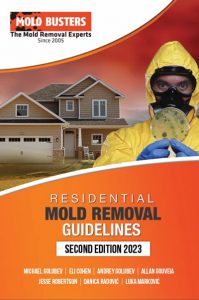
Get Special Gift: Industry-Standard Mold Removal Guidelines
Download the industry-standard guidelines that Mold Busters use in their own mold removal services, including news, tips and special offers:
"*" indicates required fields
Published: December 17, 2021 Updated: September 17, 2025

Written by:
Steven Adams
AMRT, WRT, ASD
Mold Busters
Fact checked by:
Michael Golubev
CEO
Mold Busters
